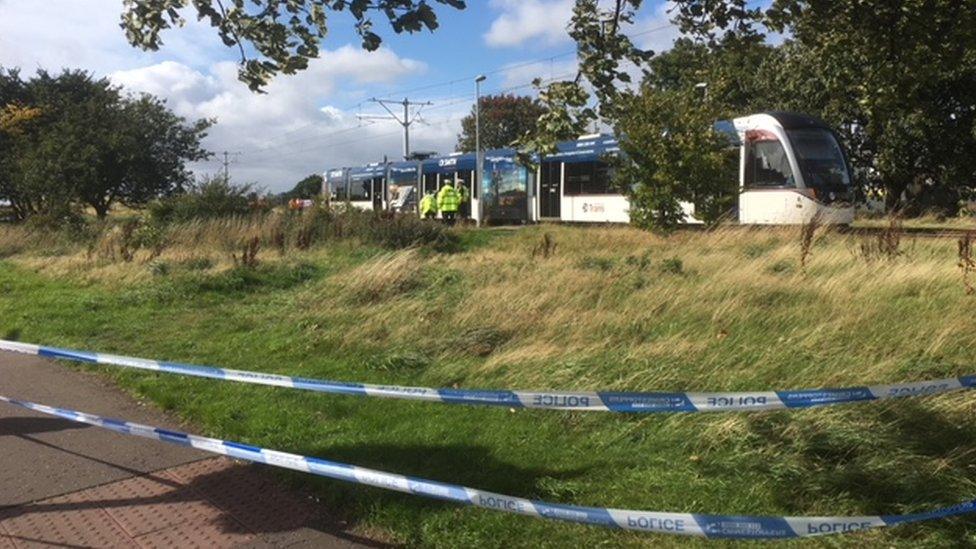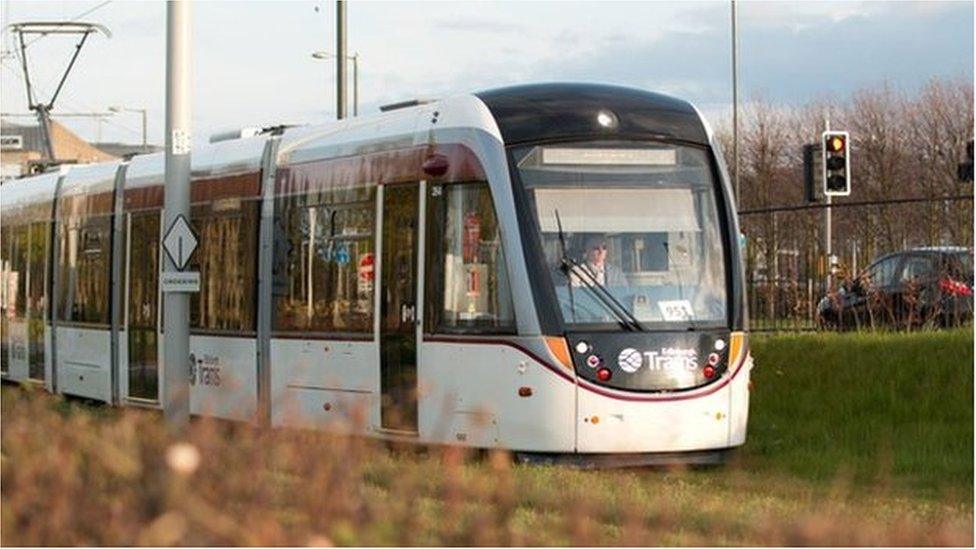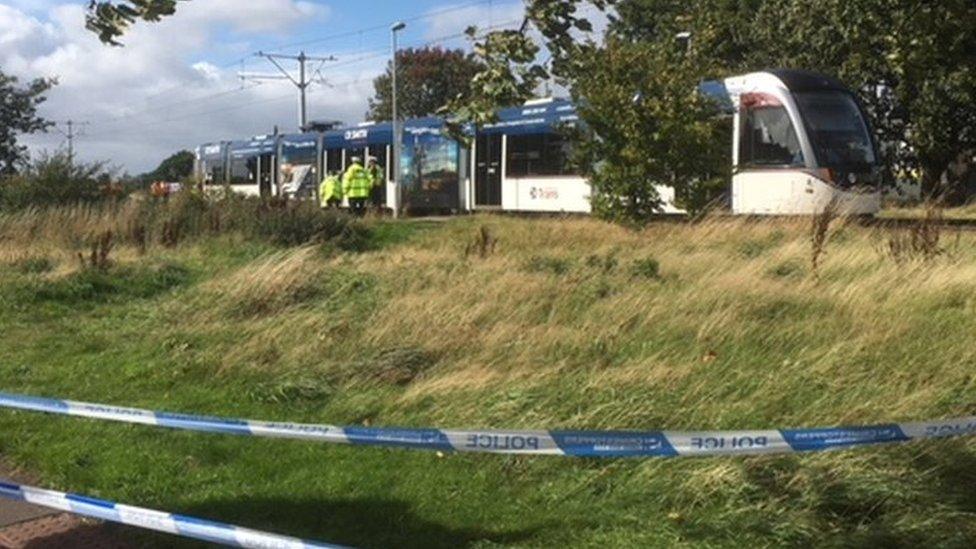Call for louder tram horns after pedestrian's death in Edinburgh
- Published

A man died at Saughton tram stop in Edinburgh last year
Rail investigators have called for louder warning horns to be fitted to Edinburgh trams following the death of a pedestrian.
Carlos Correa Palacio, 53, died in September after being hit at the Saughton tram stop in Broomhouse Drive.
The Rail Accident Investigation Branch (RAIB) has advised Edinburgh Trams Limited to increase the sound pressure levels of the horns.
The company said it was modifying the horns and testing was under way.
Mr Palacio suffered serious injuries and was pronounced dead at the scene of the accident on 11 September - the first fatality directly involving a Scottish tram since 1959.

Carlos Correa Palacio died after being hit by a tram in Edinburgh
Previous recent accidents have been linked to the tram tracks rather than trams themselves.
The RAIB published safety advice in an interim report on Thursday having investigated the accident.
The agency found that the warning horn was up to eight decibels short of the levels specified by guidance - meaning it was not suitably noticeable above background noise.
Investigators said the tram driver saw Mr Palacio approaching the crossing and applied the service brake to reduce the tram's speed, as well as sounding repeated warnings using the tram's bell.
They said Mr Palacio did not respond to the audible warnings and continued onto the crossing.
It is reported the driver then operated the emergency brake - which automatically activated the warning horn - before arriving at the crossing.
It was concluded the tram was too close to be able to stop before reaching it.
The tram's speed at the time of the collision was approximately 31mph (50kmph). The maximum line speed at this Saughton stop section is about 43mph (70kmph).

The RAIB safety advice reads: "Edinburgh Trams Limited is advised to increase the sound pressure level of the warning horn fitted to its trams.
"In the meantime, it should consider measures to mitigate risks at locations where audible warnings may be required.
"In particular, consideration should be given to the appropriateness of the current warning horn or bell as a method of warning to pedestrians using footpath crossings over off-street track sections with high line speeds."
Edinburgh Trams Limited said modifications to warning horns are being implemented across their fleet.
A spokeswoman for Edinburgh Trams said: "When Edinburgh Trams commenced passenger service in May 2014 we were satisfied that suitable and sufficient testing of the audible warning horn had been undertaken.
"We want to provide a safe tramway for our customers and take cognisance of the notice issued today by the RAIB.
"We continue to work with the RAIB and do not wish to predetermine the outcomes of their final report which is expected in the spring."
- Published11 September 2018
